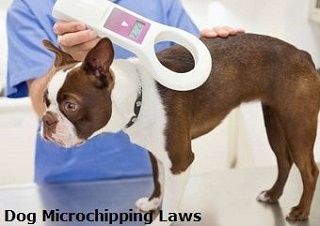PET MICROCHIPPING LAW: A pet microchip is about the same size as a grain of rice. It contains a unique identification number.
If it is for travel purposes, pet microchipping must get carried out by:
- A vet, a vet nurse, a student vet or a student vet nurse (when directed by a vet).
- A person trained in microchipping before December 29th 2014 (with practical experience).
- A person already assessed on an approved training course. Some pet microchipping rules differ in Northern Ireland.
The main reason to implant a pet microchip is to provide proof of rabies vaccination in dogs and cats. You must get a dog or cat microchipped before it has the anti rabies vaccine. That is the only way to avoid being rabies vaccinated again.
Note: Check to confirm the vet documents the microchip number inside the pet passport. The same applies if you have a third-country official veterinary certificate. It is important that it gets dated before the pet’s vaccination dates.
The Pet Travel Scheme uses the unique number to match the identify of a pet to its owner. It also offers proof that the animal got vaccinated against rabies. Pet microchipping also shows that the dog or cat was blood tested at a recognised laboratory.
If Vet Can’t Read the Pet Microchip

The vet may not always be able to read the pet microchip information – it happens! In this case you need to do the preparation once more.
That means you will need to:
- Ask your vet to re-chip and re-vaccinate the pet.
- Ask the vet to take new blood tests if you travel into the UK from an unlisted country.
- Get the vet to issue a new dog, cat, or ferret passport.
Note: In this case you may need to wait the required time limit before travelling. This happens most for those with a dog that gets re-vaccinated or has new blood tests taken.
Reading a Pet Microchip Scanner
Most modern microchips meet International Organization for Standardization standards. That means they fall under ISO 11784 and ISO 11785. This is important so EU airlines and train and ferry companies can read your pet’s microchip. They use a microchip scanner to read the details when you check in for the journey.
But, not all pet microchips meet ISO standards. That means you may need to travel with your own microchip reader. Check with your tour company before traveling with pets from the United Kingdom.
Note: The authorities must be able to read the pet microchip to allow entry. They can also put the animal into quarantine when bringing pets into the United Kingdom.
Pet Microchip Reader Malfunctions
Vets will attempt to read the microchip even during a malfunction. But, they can only re-chip the pet if they get some kind of reading. That would mean they do not need to remove the original chip.
If this happens the vet must record the new information in the current pet passport or a new passport. The new details should include:
- The unique identity number of the old chip and the new microchip.
- The date that both chips got read.
- The date that the new chip got implanted into the animal.
You must get the new passport page signed and stamped by the veterinarian. The vet should make a record of the pet re-chipping in the ‘Others‘ section of the pet passport.
New Pet Passports Issued from December 2014
If the vet is unable to read the microchip he will re-chip the pet. That means you will need a new pet passport and the vet should:
- Take a new reading from the old chip before inserting the new chip.
- Issue a new passport for your pet.
- Record both microchip readings in the ‘Marking of animals‘ part of the new passport.
Note: The benefit here is that you avoid having to prepare the pet once more for travelling abroad.
Rules for Pets with Tattoos
Tattooed pets do not need to get microchipped if the tattoo has an identification number. Pet tattoo rules also stipulate that all the following are true for the animal:
- The pet got its identity tattoo on or before the 3rd of July 2011.
- The pet tattoo is legible and the information is easy to read.
- The animal got vaccinated against rabies after it got tattooed.
The vet must record all the relevant information. He should record it in the pet passport or third-country official veterinary certificate. It must include the date of the tattooing, tattoo number, and the date of the anti-rabies vaccination.
ALSO IN THIS SECTION
PET Travel Scheme: Check out the current rules for bringing a pet into the United Kingdom.
Pet Passport and Documents: A guide to help you understand how the pet passport scheme works.
Rabies Vaccination Rules: Check the rabies vaccine works for dogs, cats, and ferrets.
Guide and Assistance Dogs: Travelling abroad with a guide dog or other assistance dogs.
PET Helpline: How to contact the Pet Travel Scheme helpline or make an official complaint.

